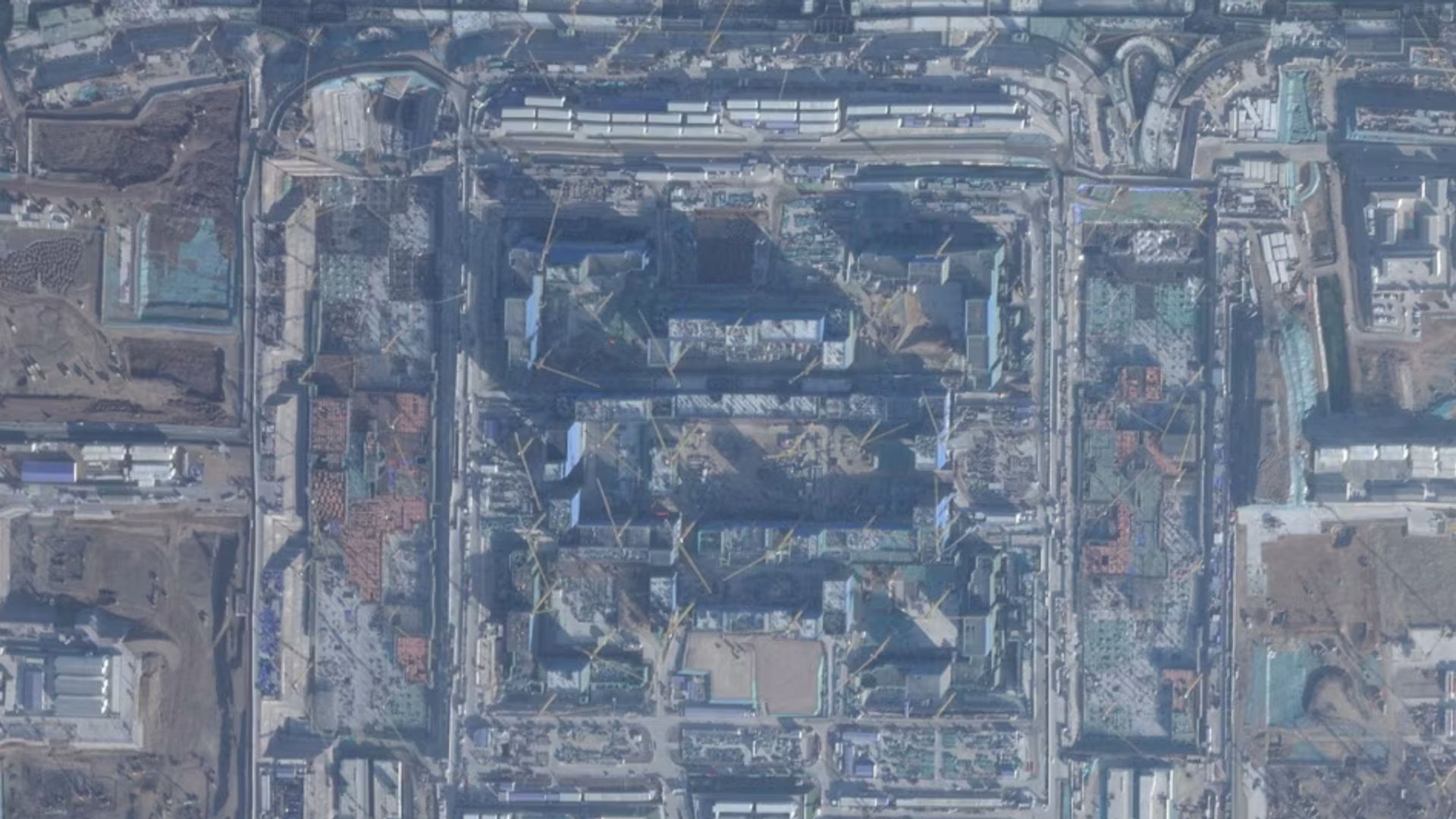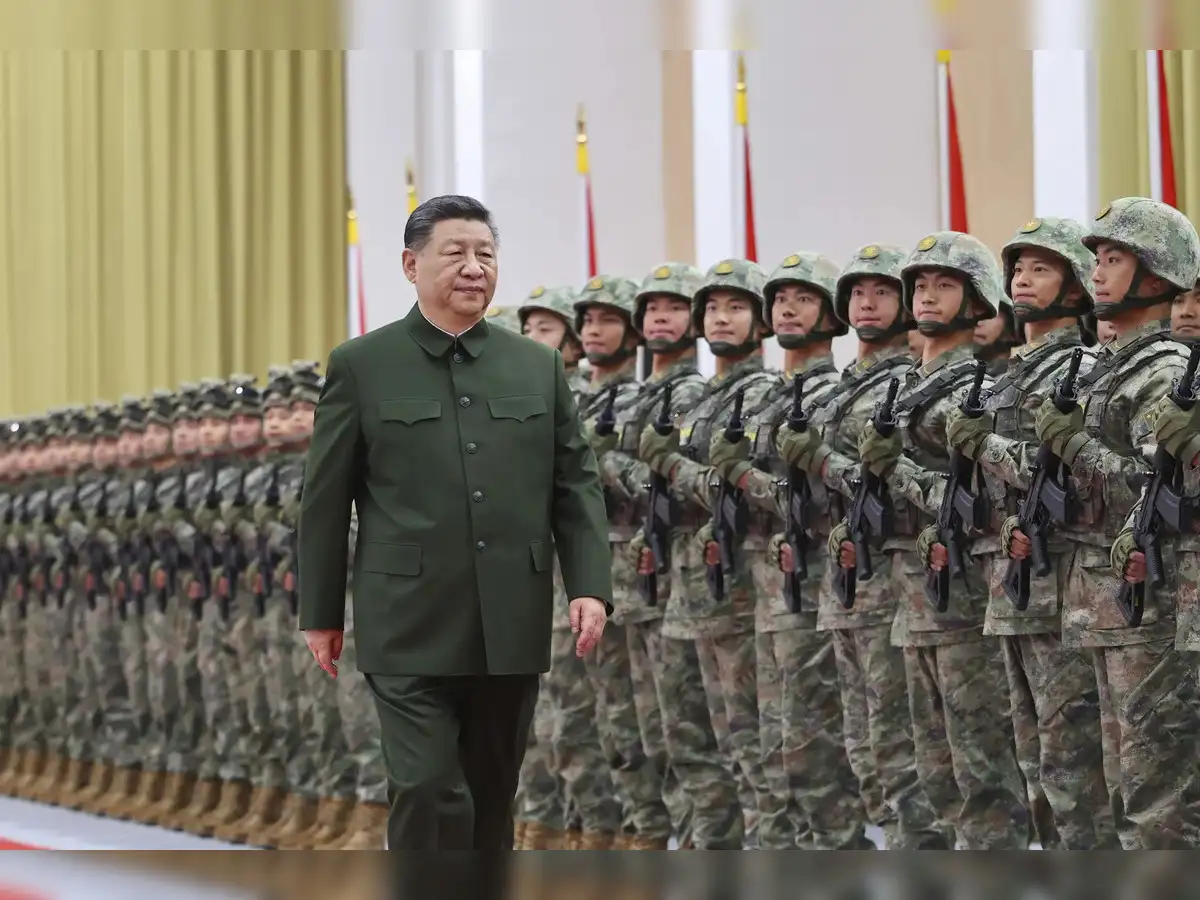Is China’s Military Hub a U.S. Challenge?
The Beijing Military Command Center, known as “Beijing Military City,” spans approximately 1,500 acres (about 607 hectares), making it potentially ten times larger than the Pentagon.

Is China’s Military Hub a U.S. Challenge?
This facility, located about 30 kilometers southwest of Beijing, will become the largest military command center globally.
The command center features deep underground bunkers built with reinforced concrete. These bunkers aim to protect Chinese military leaders, including President Xi Jinping, during conflicts, especially in nuclear scenarios. Engineers designed the structure to withstand attacks from advanced munitions like U.S. “bunker busters.”
Construction Timeline
Construction began in mid-2024 and has progressed rapidly. Numerous cranes and heavy machinery operate continuously at the site, reflecting the project’s high priority.
Strategic Importance
This new facility will replace the Western Hills complex, which served as China’s primary wartime command center since the Cold War.

The Beijing Military Command Center represents China’s commitment to modernizing its military ahead of the People’s Liberation Army’s centenary in 2027.
Operational Capabilities
The command center aims to improve coordination among China’s military branches. It will support operations across land, air, sea, space, cyber, and electronic warfare. This development addresses past weaknesses in China’s military command structure.
Security Measures
The construction site is heavily guarded. Signs strictly prohibit drone flights and photography, highlighting the project’s sensitive nature. Security measures reflect the center’s strategic importance to China’s national defense.
Comparing the Beijing Military Command Center to Global Military Facilities
Size Comparison
Covering 1,500 acres (607 hectares), the Beijing Military Command Center surpasses the Pentagon, which occupies about 130 acres. This makes the Chinese facility at least ten times larger. While Fort Liberty in North Carolina spans around 160,000 acres, it functions as a military base rather than a command center.
Design Features
Unlike many military command centers worldwide, Beijing Military City includes extensive underground bunkers and tunnel networks. These features are designed to protect key leaders during conflicts, including nuclear warfare. Such capabilities surpass those of traditional command facilities.
Strategic Importance
The command center aligns with China’s military modernization efforts. It reflects ambitions to strengthen both nuclear and conventional warfare capabilities. This initiative comes amid rising tensions in the Asia-Pacific region, particularly concerning Taiwan.
U.S. Intelligence Response to the Beijing Military Command Center
Monitoring Efforts
U.S. intelligence agencies are closely monitoring the construction. They analyze satellite imagery to track the site’s development, focusing on the extensive underground bunkers. These bunkers are designed to protect Chinese leaders during potential conflicts.
Concerns and Analysis
Former CIA analysts and U.S. officials have expressed concerns about China’s growing nuclear capabilities. They believe the command center signals China’s intent to enhance its military structure. The facility aligns with China’s goal of modernizing its military by 2027.
Strategic Implications
The command center will likely improve coordination among China’s military branches. This development addresses weaknesses previously identified in comparison to U.S. forces. The heightened security at the site underscores its strategic importance.
Security Protocols
Strict security measures are in place at the construction site. Drone flights and photography are prohibited, reflecting the project’s sensitive nature. These protocols highlight the command center’s role in China’s broader military strategy.
Read this:
The Beijing Military Command Center, or “Beijing Military City,” represents a significant step in China’s military modernization. Its massive scale, advanced design, and strategic importance reflect China’s ambitions to enhance both conventional and nuclear capabilities. U.S. intelligence agencies continue to monitor the project closely, recognizing its potential impact on global security dynamics.


 China’s Military Goes All Out in Space
China’s Military Goes All Out in Space  Trump Slaps Tariffs on Asian Nations, but India Secures Exemption
Trump Slaps Tariffs on Asian Nations, but India Secures Exemption  How InnoMake Shoes Make Navigation Safer for the Blind
How InnoMake Shoes Make Navigation Safer for the Blind  New Coronavirus Wave Hits India: What We Know
New Coronavirus Wave Hits India: What We Know  Trump Threatens 25% Tariff on iPhones and Other Smartphones
Trump Threatens 25% Tariff on iPhones and Other Smartphones  Did Trump Halt Harvard’s Foreign Enrollment?
Did Trump Halt Harvard’s Foreign Enrollment?